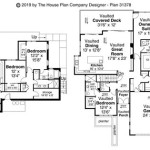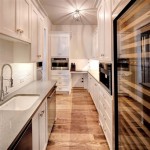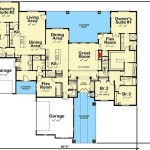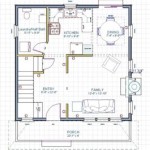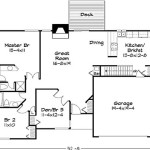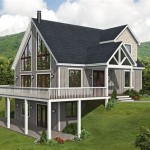```html
Home Plan for 600 Square Feet: Maximizing Space and Functionality
Designing a home within a 600-square-foot footprint presents a unique set of challenges and opportunities. Efficiency and thoughtful space planning are paramount to creating a comfortable and functional living environment. This article explores key considerations and design strategies for maximizing space and functionality in a 600-square-foot home.
The process begins with a thorough assessment of individual needs and lifestyle. Prioritizing requirements is essential for determining which features are non-negotiable and which can be adapted or omitted. This assessment directly informs the development of the home plan and ensures it caters to the specific needs of its occupant or occupants.
Considerations extend beyond square footage to include factors such as ceiling height, window placement, and the overall layout of the building. These elements influence natural light, ventilation, and the perceived spaciousness of the interior. Strategic utilization of these aspects can significantly enhance the livability of a small home.
Optimizing Space with Multifunctional Design
Multifunctional design is a cornerstone of effective space utilization in small homes. Furniture and architectural elements should serve multiple purposes whenever possible. This approach reduces clutter and maximizes the functional value of each square foot.
Examples of multifunctional design include sofa beds that convert living spaces into guest rooms, storage ottomans that provide seating and storage, and dining tables that can be folded away when not in use. Wall-mounted desks and tables also offer flexibility, allowing for workspaces to be easily created and concealed.
Built-in storage solutions are particularly valuable in small homes. Custom shelving units, integrated wardrobes, and under-bed storage systems can effectively utilize vertical space and eliminate the need for bulky freestanding furniture. Such solutions contribute to a cleaner, more organized, and spacious living environment.
The integration of kitchen appliances can also be optimized for space efficiency. Compact refrigerators, combination microwave ovens, and induction cooktops can minimize the footprint of the kitchen while still providing essential functionality. Furthermore, vertical storage solutions such as pull-out pantries and overhead cabinets can maximize storage capacity in a small kitchen.
Beyond furniture and appliances, architectural features can also be designed for multiple purposes. For example, a raised platform can serve as a sleeping area, with storage compartments built into the platform itself. Similarly, a strategically placed room divider can create separate zones within a single space while also incorporating shelving or storage.
Strategic Use of Vertical Space
In a small home, maximizing vertical space is just as crucial as optimizing floor space. Utilizing the full height of the walls can significantly increase storage capacity and create a sense of spaciousness.
Tall bookshelves are a classic example of vertical space utilization. These provide ample storage for books, decorative items, and other belongings, while also drawing the eye upward and creating a feeling of height. Floating shelves are another versatile option, allowing for flexible storage solutions that can be customized to fit specific needs.
Hanging storage solutions, such as wall-mounted racks and hooks, can also be effective for organizing clothing, kitchen utensils, and other items. These solutions keep items off the floor and countertops, reducing clutter and maximizing usable space.
Loft spaces are a more ambitious example of vertical space utilization. A loft can be used as a sleeping area, a home office, or a storage area, freeing up valuable floor space below. Access to a loft typically requires a ladder or a compact staircase, which should be carefully integrated into the overall design to minimize its footprint.
When designing vertical storage solutions, it is important to consider accessibility. Items that are frequently used should be placed within easy reach, while less frequently used items can be stored higher up. Proper lighting is also essential for illuminating vertical storage areas and making them easier to access.
Creating an Open and Airy Atmosphere
Creating a sense of spaciousness is paramount in a small home. This can be achieved through careful planning of the layout, strategic use of natural light, and the implementation of design elements that promote a feeling of openness.
An open floor plan is a common design strategy for small homes. By eliminating unnecessary walls and partitions, an open floor plan allows for a seamless flow of space between living areas, creating a more spacious and airy atmosphere. However, it's crucial to define functional zones within this open space using furniture arrangement, rugs, or changes in flooring materials.
Maximizing natural light is another essential aspect of creating a spacious feel. Large windows and skylights can flood the interior with natural light, making the space feel brighter and more inviting. The placement of windows should be carefully considered to optimize sunlight exposure and minimize glare.
Strategic use of color can also contribute to a sense of spaciousness. Light colors, such as white, cream, and pale pastels, reflect light and make a room feel larger. Dark colors, on the other hand, tend to absorb light and can make a room feel smaller. However, dark colors can be used strategically as accents to add depth and visual interest.
Mirrors are a classic design trick for creating the illusion of more space. A large mirror can reflect light and visually double the size of a room. Mirrors can be placed strategically to reflect views of the outdoors, further enhancing the sense of spaciousness.
Minimalist design principles can also contribute to a more open and airy atmosphere. By reducing clutter and unnecessary decorations, a minimalist approach can create a cleaner, more streamlined living environment. This can help to make a small home feel less cramped and more spacious.
The selection of furniture should also be carefully considered. Opting for smaller-scale furniture pieces can prevent a small room from feeling overcrowded. Clear or translucent furniture, such as glass tables or acrylic chairs, can also create a sense of openness by allowing light to pass through them.
Finally, maintaining good ventilation is essential for creating a comfortable and airy living environment. Adequate ventilation helps to remove stale air and moisture, preventing the buildup of odors and promoting a healthier indoor climate. This can be achieved through the use of operable windows, exhaust fans, and air purifiers.
```
600 Sq Ft House Plan Small Floor 1 Bed Bath 141 1140

Tiny Home Plan Under 600 Square Feet 560019tcd Architectural Designs House Plans

How Do Luxury Dream Home Designs Fit 600 Sq Foot House Plans

600 Square Feet House Google Search Apartment Floor Plans N 2 Bedroom

1 Bed Home Plan Under 600 Square Feet 560020tcd Architectural Designs House Plans

House Plan 59163 Southern Style With 600 Sq Ft 1 Bed Bath

30x20 House 2 Bedroom 1 Bath 600 Sq Ft Floor Plan Model 2c

20 30 Home Plan Everyone Will Like 20x30 House Plans 2bhk Duplex

600 Sq Ft House Plan Mohankumar Construction Best Company

21 X 27 Ft Two Bhk Home Design Under 600 Sq The House Hub

